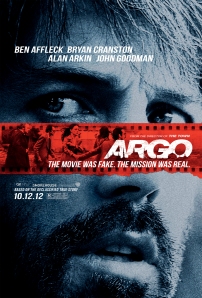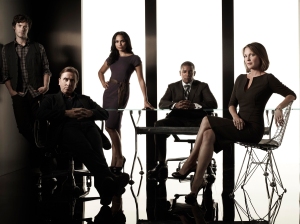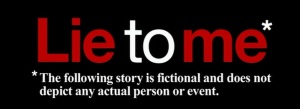As someone with two film degrees, I want to tell you something that may come as a surprise; I hardly ever go to the cinema. It’s nothing to do with downloading, only partly to do with not having as much disposable income, but mainly due to the state that cinemas and their latest releases have found themselves in these days.
Like many things it pretty much comes down to money. More than than just how much is in my own pocket though, budget day seems as good a day as any to talk about big companies trying to make as much as they can get away with. Yes, big companies have big expenditures, but they also have more seats to put bums on. Surely they could be more helpful at meeting us in the middle somewhere?
I currently live in Devon, and a trip to my local Scott Cinema, any time of the week, is £6. If I want a VIP seat, or have to watch anything in 3D it’s an extra £1.50 (£3 for both). If we compare this to the Odeon I begrudgingly visited in Colchester while at university, we find that even an off peak ticket (mon-thurs, before 5pm) including a further discount for seniors or students would still be more expensive. I saw The Hobbit in 3D with VIP seats here for less than I’d have to pay for a standard ticket at the Odeon. Needless to say, trips often occurred on Orange Wednesdays.
Back in my ex-local cinema, the Commodore in Aberystwyth, I would now only have to pay £5 (£4.50 on mondays). More than just charging only an extra £1 for 3D, they also have a bar and a car park that is free after 6pm.
Considering all three cinemas I’ve been to are either situated slap bang in the middle, or within walking distance, of the town centre, the only real difference is the size. The Commodore is an independent cinema with one screen, my local which has four is part of a small chain, and I have to admit I lost count at Colchester Odeon.
Forgive me if I’m wrong, but I thought that the bigger a company, the cheaper the deals it could offer? Supermarkets and horsemeat aside, if we use J.D. Wetherspoon as an example we can see that it offers exactly the same pints as any other pub, but does so at a cheaper price. Even with a bigger infrastructure, they can still do this because they get what is essentially bulk discount on a national scale. I don’t doubt that pint and print distribution work in different ways, but surely the principle is the same?
I’m not for a minute telling you to walk straight past your local, overall they’re often the better places (both pubs and cinemas), I’m just wondering if maybe the situation has now got to the point that for so many cities and larger towns, the huge chain cinemas have already squeezed out any smaller competition. This in turn has given them a monopoly that has left the majority of audiences with no choice but to pay whatever they demand.
Even with my less than frequent visits I’ve seen the cinema advert/plea of a cobweb laden auditorium, and unless anyone can offer me a legitimate reason as to why big chains ask for so much when an independent cinema on the edge of Wales can charge less than a fiver for the same thing, I’m sure ticket prices are a major factor that’s drawing in the cobwebs.
Yes, internet piracy is also a factor. Some time ago I wrote an article for The Rabbit, Essex SU’s student newspaper (links will be added when they become available [EDIT: this particular article can now be found here]), which puts forward the argument that piracy hurts the diversity of films, and encourages brand recognition (something else that keeps me away), but allow me here to consider this in terms of cinema audience figures.
The more people download films, the less they go to the cinema, and so the more cinemas charge? In head office propaganda & justification theory, yes that’s how it works, but surely the more cinemas charge, the more people will download?
Another largely overlooked factor, is not just box office takings, but the records they produce. The list of top ten worldwide box office takings contains only three films that were released before 2009. These are some of the most important figures that matter to Hollywood (one day I’ll do a post about why they shouldn’t be), and in today’s environment of appealing to the lowest common denominator by churning out sequels aplenty (there are also only two original films in the top ten), it is often the studios and distributors who are just as guilty. By parting people with as much cash as they can afford to, the higher up these charts they can climb, and the more they can boast about being ‘successful’.
Despite being #1 on that list, James Cameron’s Avatar still only managed second place to 1939’s Gone With The Wind when adjusted for inflation. The film was an innovative use of 3D, but much like Gone With The Wind and colour photography, it was made at a time when it was a spectacle the likes of which nothing could come close to rivalling. Today however, the technology is now taken for granted and abused.
With cinemas worldwide having invested in it, what Cameron helped to engineer as the next step in immersive storytelling is now being flaunted as a cheap gimmick the bigger businesses are using to increase ticket prices without so much as a second thought. Rather than offering anything extra however, these prices now seem only to serve an investment that had so much not already been spent on it, probably would have gone the way of the Betamax. It only works if the effort is put into it, and regardless of the fact many people physically can’t watch it, many more are becoming disillusioned by the fact that such visually stunning films like Life of Pi (which itself is emptying the pockets of visual effects companies now in administration) are too few and far between, and the standard conversion process often achieves only sloppy results.
It is also because of this that 3D seems to be going hand in hand with downloading, but rather than giving audiences a better experience they can’t download, it could actually be making things worse. By processing the action heavy summer blockbusters (those often topping the download rankings) into 3D, the only thing studios and distributors are doing is to make those same action sequences blurry and confusing. I was disappointed to find that the best 3D effects in The Avengers were the pre-opening credit company logos, and I have to say that the classic ‘camera circling the surrounded heroes’ shot looked far better in the small screen trailer than a 3D cinema.
The fact that there is a growing trend in 3D films that are not being given a 2D release in the UK only makes thinks worse.
So what does the future hold for my own cinema going? Just because I can now afford to go more often than I did this time last year, only by virtue of living the country, that is not to say I am any less picky. For a start, I am pleased there are groups such as Where’s My 2D? which are campaigning for studios and cinemas to go easier 3D distribution, and even lobbying equality ministers in parliament on behalf of those who physically are caused actual pain by 3D, and it is a fight I wholeheartedly endorse.
But while I’m still looking forward to watching several films on the big screen, a list that includes the likes of Robot & Frank and Welcome to the Punch more than Iron Man 3, I have to that as much as I prefer the event of going to the cinema, watching a DVD on my comfy sofa is still my viewing method of choice. Whilst you should never underestimate the discovery of an overlooked classic in a charity shop, I can only look forward to the time when the cinema is back in it’s number one spot.




